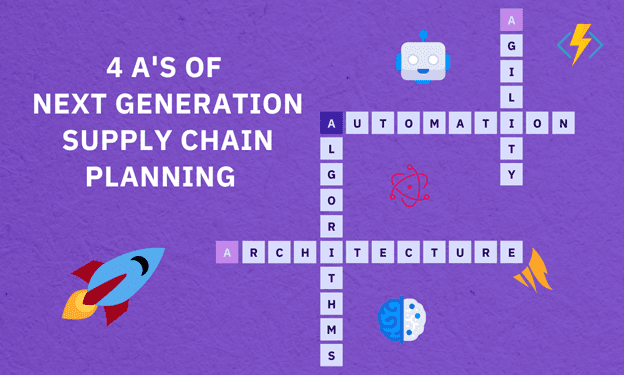 I recently changed continents and realized that my favorite hair styler wouldn’t work in the U.S., so I went online to order it. It is one of those high-end brands with global recognition, and to my surprise, the manufacturer’s own website did not have any stock and no indication on when it would be available. I was hoping the retail chains carrying this brand had some in their stores, but after checking 10+ retailers, to my surprise, it was nowhere to be found, and the only website that had it was charging $200 more than the MSRP! When my fiance heard about the price, he advised that I find a local hairdresser and set up a frequent-shopper account with them for a few months until the tool is back in stock.
I recently changed continents and realized that my favorite hair styler wouldn’t work in the U.S., so I went online to order it. It is one of those high-end brands with global recognition, and to my surprise, the manufacturer’s own website did not have any stock and no indication on when it would be available. I was hoping the retail chains carrying this brand had some in their stores, but after checking 10+ retailers, to my surprise, it was nowhere to be found, and the only website that had it was charging $200 more than the MSRP! When my fiance heard about the price, he advised that I find a local hairdresser and set up a frequent-shopper account with them for a few months until the tool is back in stock.
A few days later, we were faced with a similar situation when we went shopping for a new car, and since the new cars are also short in stock, we had to buy a pre-owned one, almost at the price of a brand new one!
When the pandemic started in 2020, no one could foresee the impacts of the global supply chain disturbances would last this long. Here we are, two years after the start of the pandemic, and we are still very much feeling the effects.
2021 came with a new set of challenges as global and local supply chains were hit by raw materials shortages, accompanied by longer lead times and higher shipping costs, lack of labor, and the pent-up demand actualizing as record-breaking sales. We can say things have changed, and the pandemic is not just an anomaly event after all. Now the new norm is constant change, and agility is the name of the game when it comes to supply chain planning.
After spending decades in implementing and perfecting lean management principles and global sourcing agreements to consolidate shipments with key suppliers, manufacturers and retailers all had to go back to the drawing board to create new supplier networks, distribute risk, and reassess safety calculations to build buffers for uncertainties both on the supply and demand side. And pretty much everyone realized that the old technologies used in planning are not going to cut it anymore when there are so many moving parts in the game. As most of the common pain points and challenges from 2020 continued to be still relevant in 2021, many retailers accelerated their search for next-generation planning capabilities.

According to data from a recent research survey, the following were on top of the supply chain headaches not addressed by their current systems:
- Supply shortages due to supplier’s inability to meet expected performance targets
- Critical inventory disruptions/deficiency anywhere in the supply chain
- Network bottleneck identification
- Response to disruptions
The same survey indicates that 50% of the retailers are unhappy with their existing technology solutions and are looking to enhance or replace them to bring more diagnostic and predictive capabilities, including:
- Current demand vs. forecast analysis and rebalancing
- Network cost modeling
- Automated forecasting processes
- Real-time insights embedded into operations
- Data cleansing and data robustness
To achieve all these and more, next-generation planning platforms need to combine AI/ML predictive capabilities with operational diagnostics, expand beyond the enterprise, and have visibility across the whole ecosystem. This includes suppliers, logistics providers, sales, and fulfillment locations/channels supporting autonomous planning decisions that take data flowing from various internal and external sources into account.
When we consider the ongoing disruptions on the supply side and the evolution of customer expectations convenience, availability, and speed, we can’t rely on static systems or manual workflows anymore. The planning platforms need to evolve with changing business needs. When we put all of these requirements together, we have key 4-dimensions that will differentiate the next-generation planning platforms.

4 Must-Haves for Next-Generation Supply Chain Platforms
Algorithms: There are still many opportunities incorporating AI/ML in daily operations, starting with forecasting and demand-sensing and expanding into managing the risk around supplier performance and reliability at a very granular level. In addition to incorporating the impact of special events and promotions at the SKU/Location level, it is possible to do probabilistic planning with different service targets, supplier performance risks, and transportation alternatives that evolve with the changing business dynamics. Planning systems need to address the risk and variability not only on the demand side but also on the supply and logistics side. In the last two years, we’ve seen that these deviations are now part of the daily challenges for many businesses. While using demand-sensing algorithms to detect changes in customer behavior, we need to pay as much attention to the supply chain’s reliability as possible.
Automation: Digital workflows, including internal and external data integration, master data diagnostics, forecasting, replenishment, procurement, extending all the way to fulfillment and transportation planning, can immensely improve planner productivity and speed of decision-making. Enabling exception-based management of daily operational tasks through a dashboard of alerts and diagnostics covering the whole supply chain ecosystem enhances the quality of decisions and the utilization of scarce resources, especially during times of disruption and fast growth.
Architecture: Next-generation planning platforms need to have a robust, configurable, and scalable architecture that can support integrated decision-making across various functional areas as well as across different decision-horizons combining strategic, tactical, and operational planning. This will allow scenario planning when supply chain disruptions occur and to take immediate action with new set up network planning parameters. Easy two-way integration with internal and external systems to enable network visibility, demand-sensing, and collaboration across the ecosystem are now among the most desired capabilities. Planning platforms with the ability to deep-dive to the transactional level data and being able to switch back and forth between different levels of aggregation across multiple dimensions, including product, location, vendor hierarchies, make life easier for planners. It provides a single source of truth with visibility and analytics based on the same data.
Agility: For businesses to be agile, they need agile planning platforms. Agility can come in different shapes and forms.
- Are the capabilities in the platform like Lego pieces? This is also referred to as “composability.” Can different functions receive data from different systems? Can these systems be easily replaced?
- Does the platform enable scenario planning and comparison when there are different objectives or different constraints at play?
- Can the workflows and analytics easily change over time? Can they be enhanced with new information? Self-learning models provide modeling agility. They can take real-time information from evolving data sources, incorporate AI algorithms, and adapt to the businesses’ varying digital maturity, data availability, and commercial priorities.
- Does the technology provider deliver new features and functionality in an agile manner? How fast can they bring new capabilities to your business?
There’s another level of agility that is often overlooked.
When Amazon launched same-day delivery in 2009, it opened to a new generation of retail business. Within ten years, customer expectations evolved drastically. In the last two to three years, rapid delivery became the norm, giving birth to many quick commerce companies. Now there are more than 30 companies offering delivery within one hour. This requires next-generation supply chain planning and execution capabilities to keep pace.
 Asena Yosun Denizeri is the Head of Retail solutions at Solvoyo and has over 20 years of experience in implementing Planning, Pricing, and Optimization solutions in global companies in the U.S. and Europe. She has led cross-functional teams in large-scale digital transformation projects touching Category Planning, Assortment Localization, Demand Planning, Promotion Planning, Allocation and Replenishment, Price Optimization, and S&OP.
Asena Yosun Denizeri is the Head of Retail solutions at Solvoyo and has over 20 years of experience in implementing Planning, Pricing, and Optimization solutions in global companies in the U.S. and Europe. She has led cross-functional teams in large-scale digital transformation projects touching Category Planning, Assortment Localization, Demand Planning, Promotion Planning, Allocation and Replenishment, Price Optimization, and S&OP.
Following her consulting tenure with Silicon-valley based software companies, she brought her Advanced Analytics and Business Process Engineering experience to Apparel Retail where she worked at Gap Inc. and Cache, where she led Merchandise Planning and Distribution teams to advance analytical capabilities in Forecasting, Assortment Planning and Price Optimization to improve sales and profitability.
Yosun holds B.S. and Master of Engineering degrees in Operations Research and Industrial Engineering from Cornell University. She is one of the contributing authors in the Oxford Handbook of Price Management and has been a guest lecturer in San Francisco State and Columbia University business school on multiple occasions.
packers and movers bangalore
packers and movers bangalore near me
packers and movers bangalore cost
packers and movers bangalore to hyderabad
packers and movers bangalore price
packers and movers bangalore marathahalli
packers and movers bangalore to chennai
The post Autonomous Planning in Supply Chain: 4 Must-Haves for Next-Generation Platforms first appeared on shrisaimovers.
https://ift.tt/Hv564me https://ift.tt/esnaUXt https://notes.io/UWxn https://ift.tt/1WhkYwZ https://ift.tt/TA37GIP https://ift.tt/P6ML7dK https://ift.tt/2JFqtp1 https://ift.tt/WOLEFsJ https://ift.tt/8YfAZjg https://ift.tt/Ywyu7vb https://ift.tt/ksD1p3B https://ift.tt/WwBUo94 https://ift.tt/Spc1b8e https://ift.tt/XVANEJK https://ift.tt/RBYHtsS https://ift.tt/AMSxUdg https://ift.tt/XaKSj6O https://ift.tt/0f58Y4s https://ift.tt/6CwP3kt https://ift.tt/nKJRaTC https://ift.tt/xpAoOR6 https://ift.tt/KnvkWcH https://ift.tt/ef7rA0m https://ift.tt/JATpv4l https://ift.tt/t0awQNh https://ift.tt/kwqFm1N https://ift.tt/PRkEZ8c https://ift.tt/foq5Hkw https://ift.tt/rR0yKbl https://ift.tt/q3E4LgB https://ift.tt/Pe1xmJW